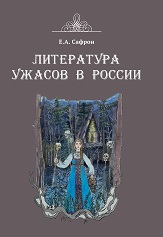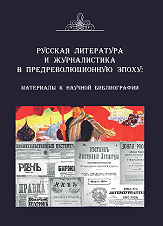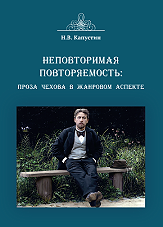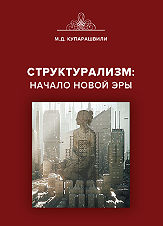Руднев Дмитрий Владимирович,
доктор филологических наук, кандидат исторических наук,
Доцент, профессор кафедры русского языка
Российский государственный педагогический университет им. А.И. Герцена;
Ведущий научный сотрудник
Институт лингвистических исследований Российской академии наук
электронная почта: rudnevd@mail.ru
Терещук Андрей Александрович ,
Кандидат филологических наук,
Доцент кафедры романской филологии
Российский государственный педагогический университет имени А.И. Герцена
электронная почта: atereschuk@herzen.spb.ru
The article presents a comparative analysis of the use of military terms in the treatise “Training and Skill of Military Order for Infantrymen” (1647) and its Dutch source “Krychs-konst te voet” by Johann Jacob von Wallhausen. The example of words with the root -polk- (polk, polchok, opolchenie) shows the difficulties that Russian translators had because of the need to convey differentiated European military taxonomy in Russian. Russian lexemes with the root -polk- reveal polysemy in the charter. They were used in translating various military terms from the source: the lexeme opolchenie is used to translate the words Batalie, ordeninghe, slacht-orden into Russian, the lexeme polk — in translating Regiment, trop, Batalie, ordeninge, corpus. At the same time, the word polk is predominantly used to translate Regiment, and the word opolchenie is used to translate slacht-orden, ordeninghe. The word Batalie is equally widely translated using the lexemes polk and opolchenie. The widespread word polk did not contain a semantic component that characterized the regular principles of organizing the new European army, in connection with this, the widespread use of the Slavic word opolchenie was caused by the need to convey in Russian the European idea of organizing an army on the basis of regularity and order. In an effort to convey the meaning of European military terms, translators used parallel nominations, double nominations, as well as intra-text glosses.
Keywords: history of the Russian language, 17th century, Dutch language, military treatise, terminology, translation, J.-J. von Wallhausen
The study was funded by the grant Russian Science Foundation (RNF, project No. 23-28-007760).
References
1. Uchenie i khitrost’ ratnogo stroeniia pekhotnykh liudei. St. Petersburg: Tip. “Berezhlivost’ ”, 1904. 357 s.
2. Wallhausen J.J. Krychs-konst te voet. Arnem, 1617. 117 p.
3. Stang Ch.S. La langue du livre “Uchenie i khitrost’ ratnogo stroeniia pekhotnykh liudei». Oslo: I kommisjon hos J. Dybwad, 1952. 86 p.
4. Rusakovskiy O. The Russian Edition of Johann Jacobi von Wallhausen’s “Kriegskunst zu Fuß” (1649): The History of a Failure? // Militaergeschichtliche Zeitschrift. 2020. Vol. 79. No. 1. P. 1–25. DOI: 10.1515/mgzs-2020-0001
5. Parker G. From the house of orange to the house of bush: 400 years of revolutions in military affairs // Militaire Spectator. 2003. No. CLXXII/4. P. 177–193.
6. Albi de la Cuesta J. De Pavía a Rocroi: Los tercios españoles. Madrid: Desperta Ferro Ediciones, 2017. 430 p.
7. Bäckström O. Military revolution and the thirty years war 1618–1648: Aspects of institutional change and decline. Helsinki: Helsinki University Press, 2023. 304 p.
8. Stevens C.B. Russia’s wars of emergence, 1460–1730. London; New York: Routledge, 2013. 329 p.
9. Malov A.V. Moskovskie vybornye polki soldatskogo stroia v nachal’nyi period svoei istorii. 1656–1671 gg. Moscow: Drevlekhranilishche, 2006. 624 s.
10. Roberts K. Pike and shot tactics, 1590–1660. Oxford: Osprey Publishing, 2010. 64 p.
11. Zhivov V.M. Iazyk i kul’tura v Rossii XVIII veka. Moscow: Iazyki russkoi kul'tury, 1996. 591 s.
12. Hoque M.A., Ali M.M., Puteh-Behak F., Baharun H. Lexical borrowings from the English language into Bangla short stories // Journal of Language and Linguistic Studies. 2021. No. 17 (1). P. 158–172. DOI: 10.52462/jlls.9.
13. Sidorenko R.I. Iz nabliudenii nad leksikoi pamiatnika XVII v. «Uchenie i khitrost’ ratnago stroeniia pѣkhotnykh” liudei» // Nauk. zap. Kiїv. ped. іn-tu. 1958. T. XXIX. S. 49–65.
14. Sidorenko R.I. Voennaia leksika pamiatnika XVII veka «Uchenie i khitrost’ ratnago stroeniia pѣkhotnykh” liudei»: avtoref. dis. … kand. filol. nauk. Lvov, 1960. 16 s.
15. Epifanov P.P. «Uchenie i khitrost’ ratnogo stroeniia pekhotnykh liudei» (iz istorii russkoi armii XVII v.) // Uchenye zapiski MGU. 1954. Vyp. 167. S. 77–98.
16. Slovar’ russkogo iazyka XI–XVII vv. Moscow: Nauka; St. Petersburg: Nestor-Istoriia, 1975–2023. Vyp. 1–32.
17. Sorokoletov F.P. Istoriia voennoi leksiki v russkom iazyke. XI–XVII vv. Leningrad: Nauka. Leningr. otd-nie, 1970. 381 s.
18. Marin P. Compleet Fransch en Nederduitsch woordenboek, In’t welk klaarlyk uitgelegd zyn de woorden van den gemeenzamen Styl, en de gebruikelykfte Spreekwyzen, de eigentlyke Nederduitsche Taale uitmaakende... Amsterdam: wed. van B. Visscher, J. Oosterwyk, G. onder de Linden, en te Dordrecht, bij J. van Braam, 1717.
19. Konusov A.P. Istoriia slova ‘polk’ // Russkii iazyk v shkole. 1941. No. 2. S. 19–22.
20. Словарь Академии Франсуазы, посвященный Руа. Т. 1–2. Париж: Chez la Veuve de Jean Baptiste Coignard; Ше Жан Батист Куаньяр, 1694 год.
21. Джонс У.Дж. Лексикон французских заимствований в немецком словаре (1575–1648). Берлин; Нью-Йорк: де Грюйтер, 1976. IX, 699 стр.
22. Вальхаузен Дж. Дж. Военное искусство для инфантерии. Франекер: Ульдрик Бальк, 1615. 152 стр.





.png)







